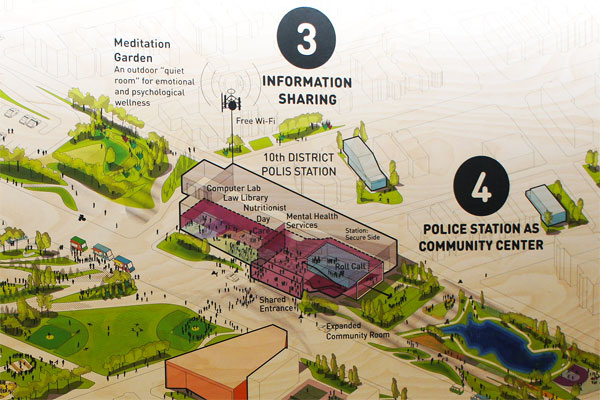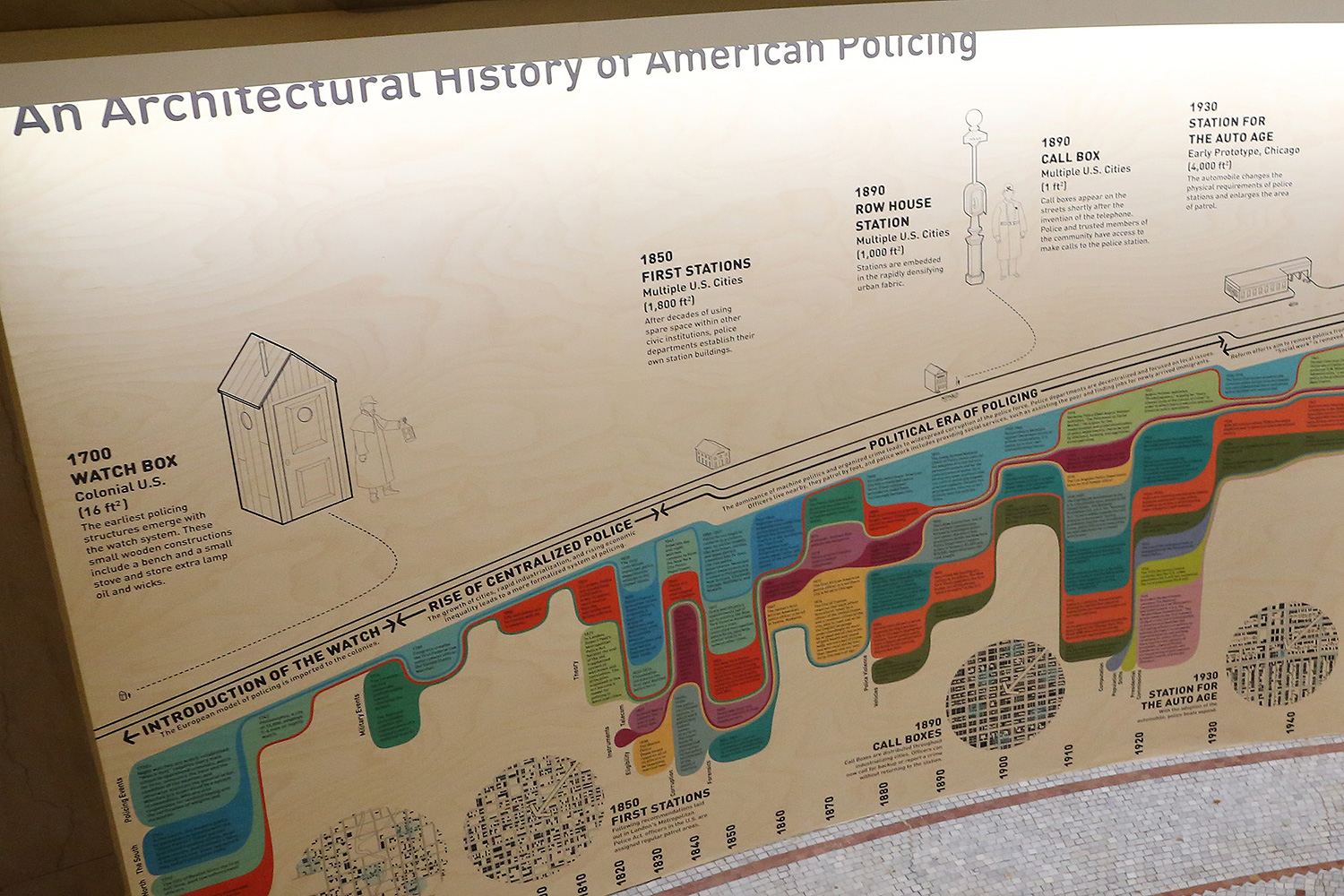Rahm Emanuel's awful 2015 has gone national. Rick Perlstein's "The Sudden But Well-Deserved Fall of Rahm Emanuel" at The New Yorker went viral, as did a major Washington Post piece on how much credibility the mayor has lost, particularly within the black community to whom he owes much of his electoral success.
Did anything go right for Rahm last year? Perhaps one thing: public space. The 606, the Riverwalk, and Northerly Island's park all opened to widespread acclaim. It may not sound like much compared to the controversies with police and schools, and parks are usually considered at best a secondary civic issue. But it's also arguably more important in Chicago than in any other city in America, which ever since Daniel Burnham has defined itself on public space.
It also included the Chicago Biennial, which closed yesterday, a months-long exhibit meant to center Chicago in the world's dialogue over public space. And within the Biennial was an idea that could tie the mayor's achievements with the built environment to his higher-profile failures with the police and the community: Jeanne Gang's Polis Station.
Gang's rethinking of the contemporary police station drew as its inspiration the president's Task Force on 21st Century Policing, a document that, as the Department of Justice prepares to investigate the city's police force, is likely to influence future police reforms in Chicago.
It has six categories of recommendations: building trust and legitimacy; engagement and transparency in policy and oversight; the use of technology and social media in outreach and engagement; the use of community policing and community partnerships in crime reduction, as Cincinnati is pioneering; better police training and education; and improved officer safety and mental and physical wellness.
"In the report, which is all policy-based, there was nothing about design," Gang told an audience at Chicago's cultural festival this September. "So what we tried to do was take the recommendations in the report and test them, to see how they might flesh out as design elements."
But Gang didn't just pull from the future of policing; she also drew on the past. "The police station really started as a small kiosk, with people from the community walking around it," Gang said. "As the police station got bigger, it became a fortress surrounded by parking, and created separation between police and members of the community."
Half of Gang's exhibition is devoted to telling the history of the police station. From the kiosk, or "watch box," stations grew to the size of a small house, often paired with call boxes, which gave access to "police and trusted members of the community." As departments became more professionalized, police stations expanded in size—from a 4,000-square-foot Chicago prototype police station in 1930 to the 45,000-square-foot "fortress station" represented by Chicago's 2nd District Station in 1960.
Having detailed how the design of police stations mirrored changes in society and policing over their history, Gang and her team asked residents to envision what the police station of the future might look like, using the presidential task force's policy measures as an organizational scheme.

The answer, as applied to the 10th District station on the border of Little Village and North Lawndale, was a multiuse building: not just a police station, but computer lab, law library, nutritionist, day care, mental health services, and community room, all accessed by a shared entrance. Next door would be a "meditation garden," and across the street a gym. One small part of her vision has already been realized: a basketball court carved out of the station's parking lot.
It's not a lot. But as Blair Kamin has reported, Gang has the ear of the mayor (and the former Park District chief of staff in her employ):
On a recent tour of Northerly Island, Mayor Rahm Emanuel recalled how he met Gang after his first election to discuss her 2011 book, "Reverse Effect: Renewing Chicago's Waterways."
The book not only contemplated damming the Chicago River to prevent the spread of Asian carp into the Great Lakes. It also envisioned how such a move might lead to redevelopment of nearby communities like Bridgeport. Eventually, the Chicago Park District tapped Gang to design a handsome North Side boathouse that flaunts a serrated roof. She's designed a comparable boathouse, now under construction, in Bridgeport.
Gang's vision, bold as it is, can't compare to the need for political and structural reform within the police department, not to mention strengthening the other institutions it interacts with—or doesn't interact with, and should. That will take years, and is likely to extend well beyond the mayor's tenure. But transforming public space has been something the mayor's administration has been eager and able to do. Perhaps Gang's Polis Station could be part of that legacy, and a beginning to broader ideas of reform.



